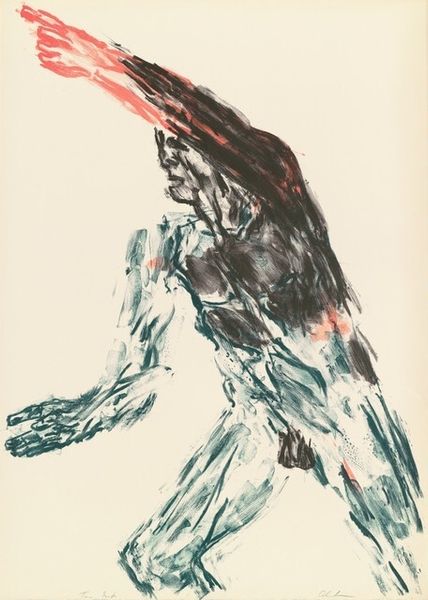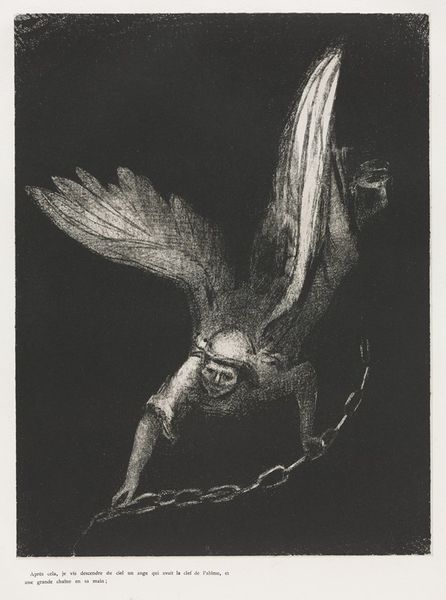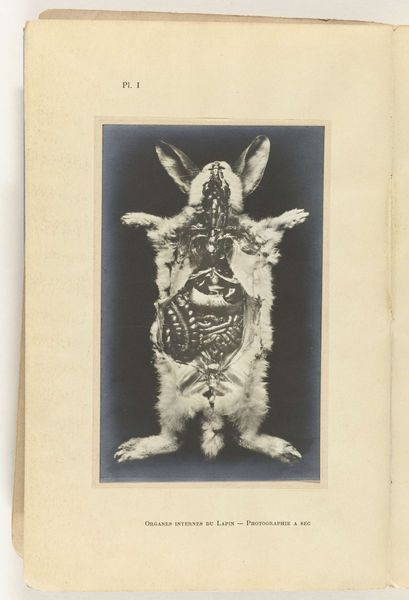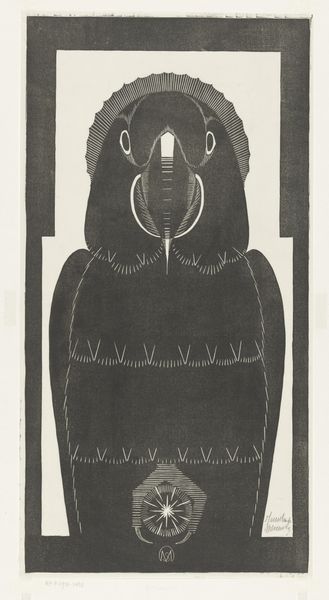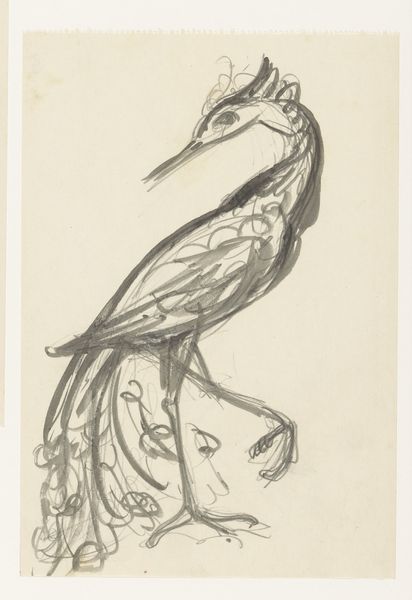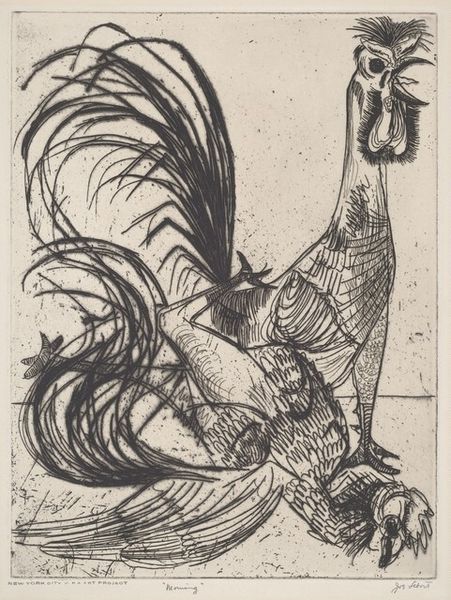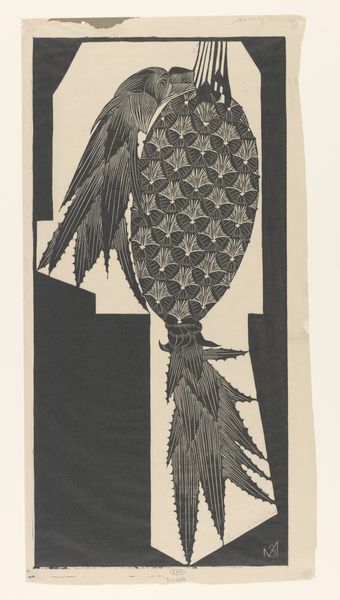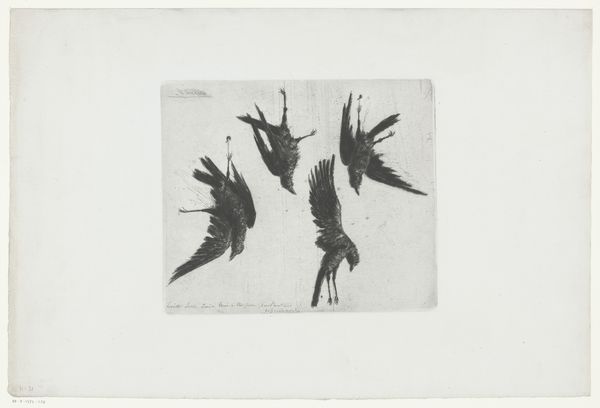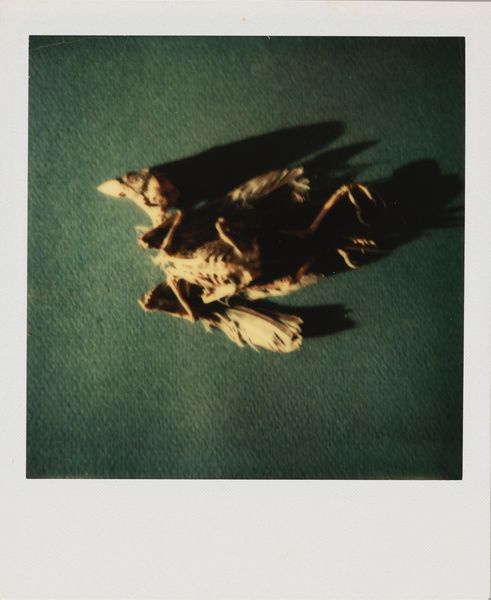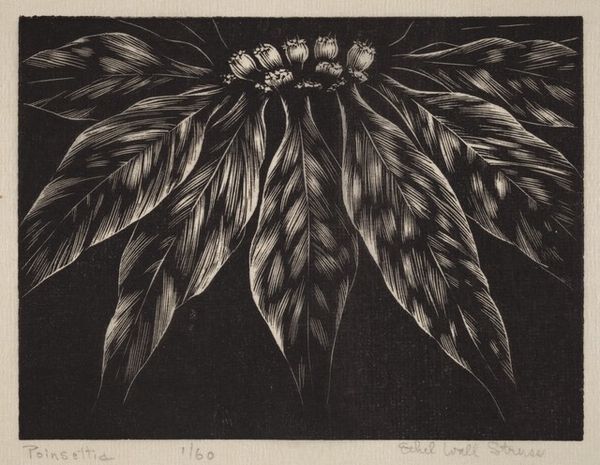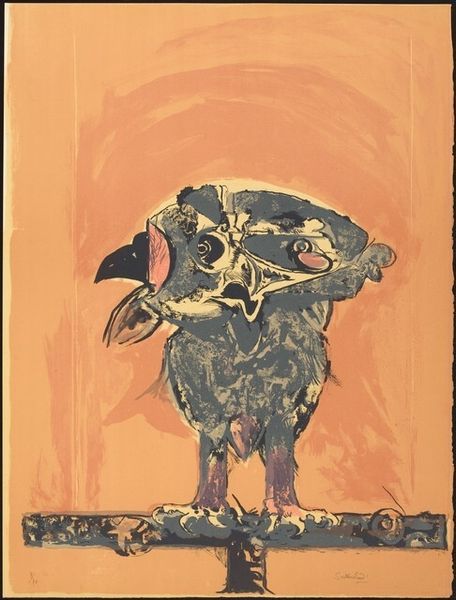
Dimensions: height 158 mm, width 100 mm
Copyright: Rijks Museum: Open Domain
Editor: Here we have Adolphe Louis Donnadieu’s gelatin silver print, "Anatomie van een kip", which translates to “Anatomy of a Chicken,” created before 1901. It’s a strikingly morbid image of a gutted bird, hung upside down. It's hard to look at. What kind of conversation do you think this photograph sparks? Curator: This piece immediately places itself within a complex history of representing the abject within the artistic space. Looking at it through the lens of socio-political history, we can observe how the artistic portrayal of death and decay—themes associated with "vanitas"— served didactic functions within society. How do you see the museum as impacting our understanding of it now versus its original intention? Editor: That's a great point, it does recontextualize it entirely. Seeing it now, in a gallery setting, gives it almost an art-for-art's-sake aura that might be very different from, say, its use as an anatomical guide. Curator: Precisely. Furthermore, we must consider the rising influence of photography during this period. The "realism" tag is significant here. How did photography's purported objectivity intersect with existing art forms to shift perceptions and functions? Editor: It's interesting how photography, with its supposed 'truthful' capturing of the real, gets used for a subject like this that could also exist in painting. The choice of photography makes the viewing experience so visceral, doesn't it? Curator: I agree. By choosing photography, Donnadieu engaged with a discourse around scientific observation and challenged accepted art practices. It makes us ponder the evolving institutional forces at play when categorizing and presenting knowledge, or in this case a visual representation. Ultimately, is it successful as science or commentary? Editor: That's so interesting, and definitely not what I was thinking when I first saw it. I will always think about it in these multiple contexts now. Curator: Excellent! I think these lenses enhance our understanding of artistic motivations.
Comments
No comments
Be the first to comment and join the conversation on the ultimate creative platform.
